Classes allow users to create custom types in Python. A class defines the form and behavior of a custom type using methods. Objects or instances are created from a class and can have their own state and values. Common class methods include __init__() for initializing objects and setting initial values, and other methods like set_age() for modifying object attributes. Classes can inherit behaviors from superclasses and override existing methods.

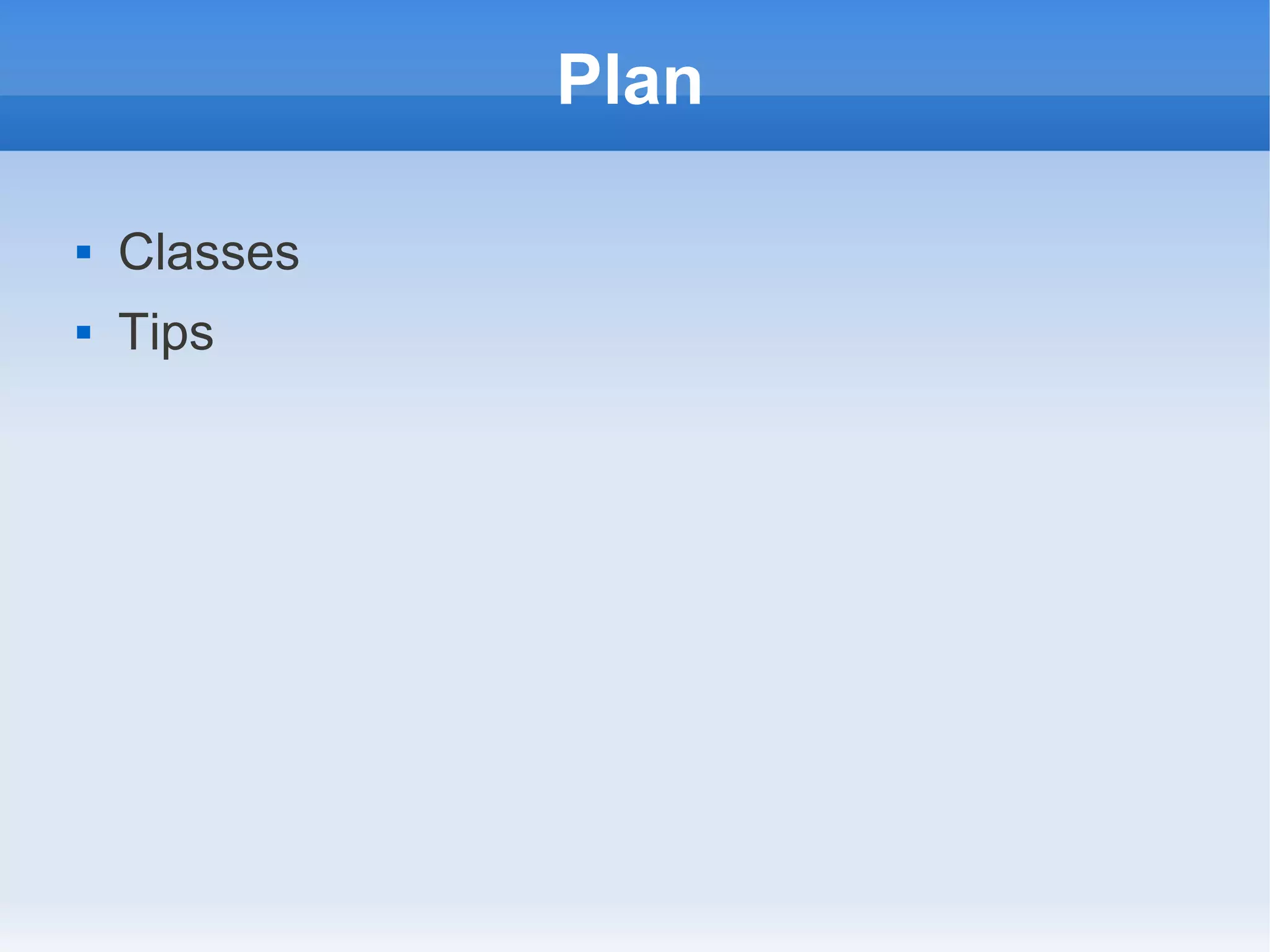
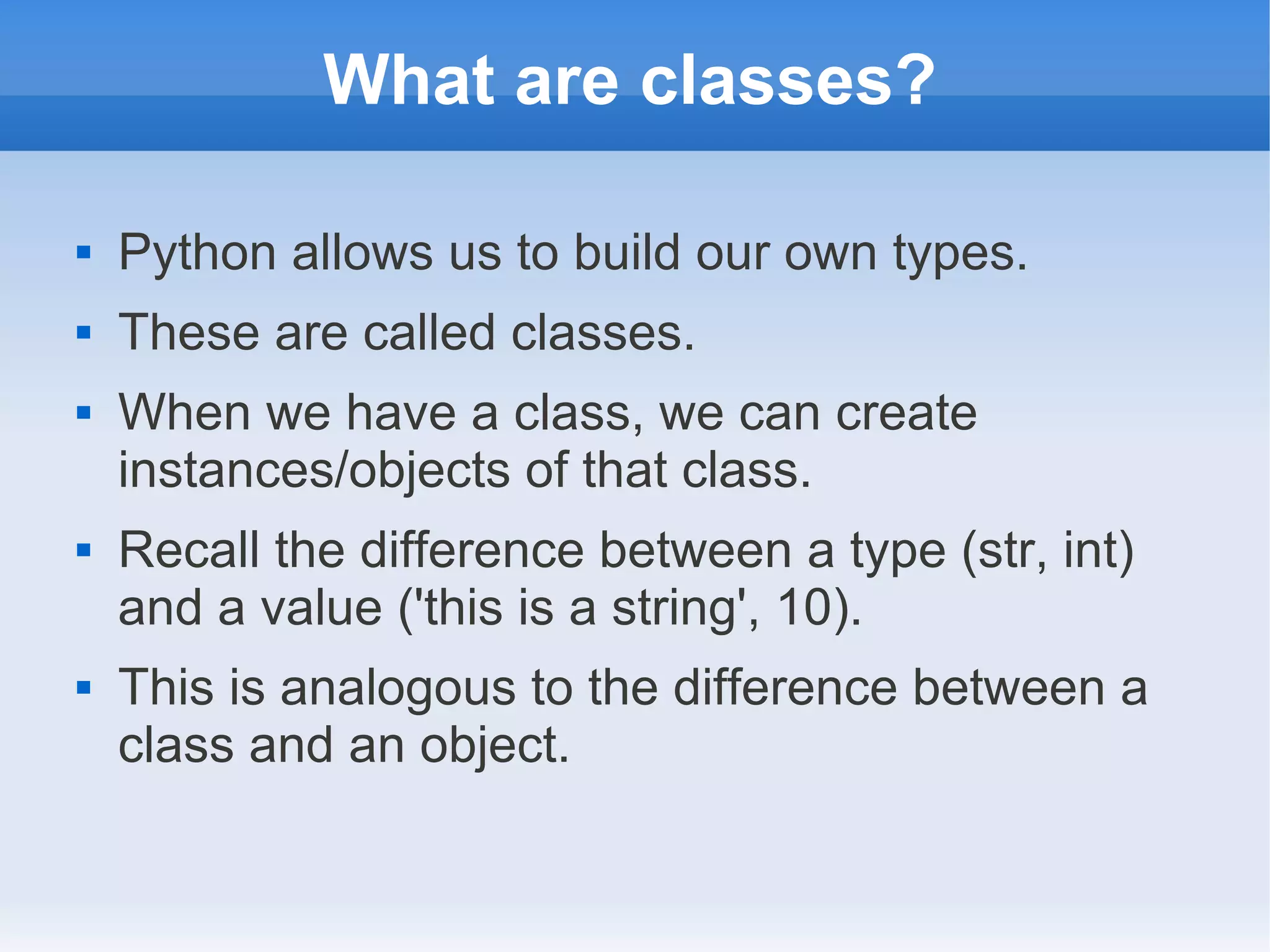
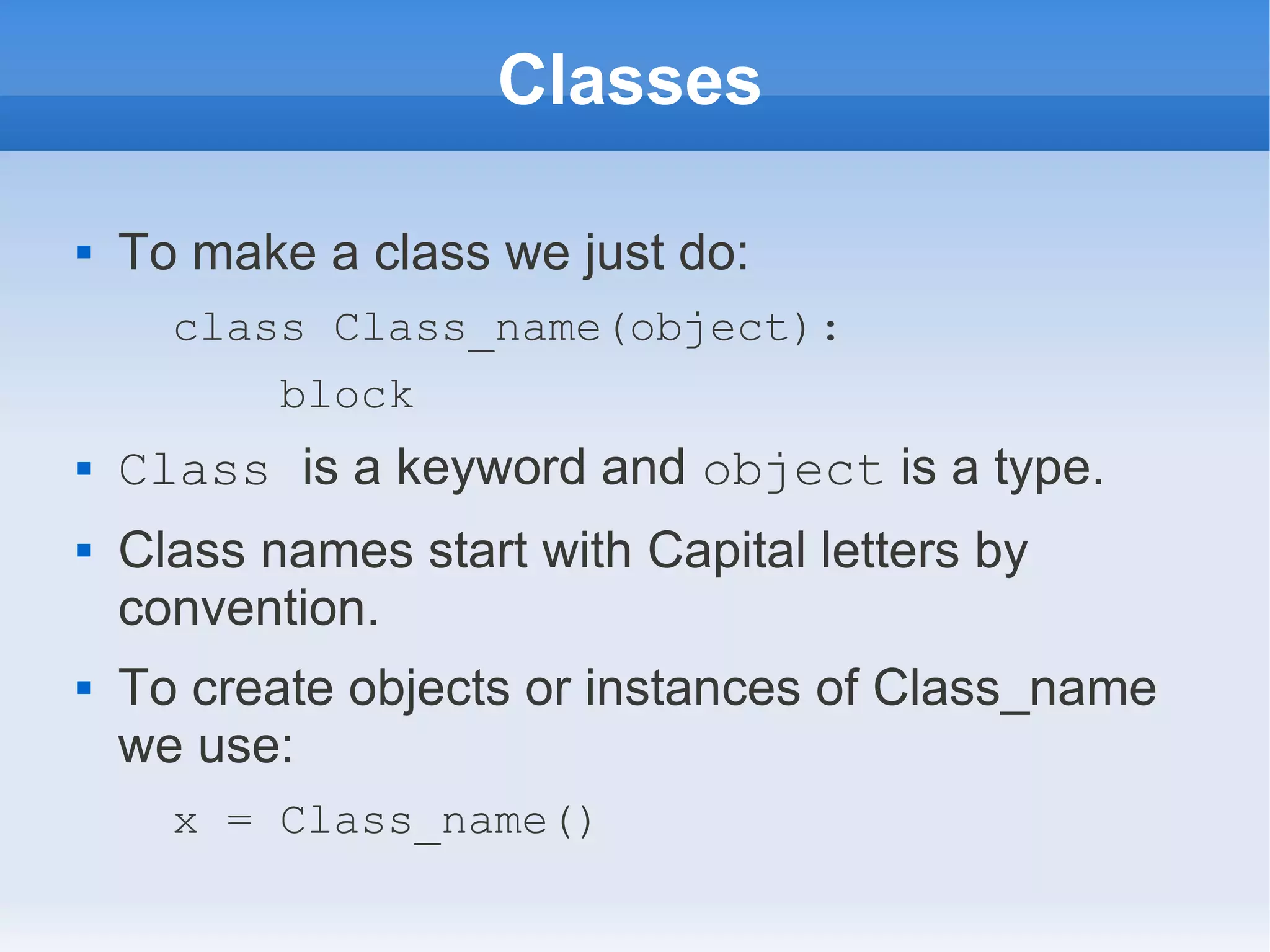
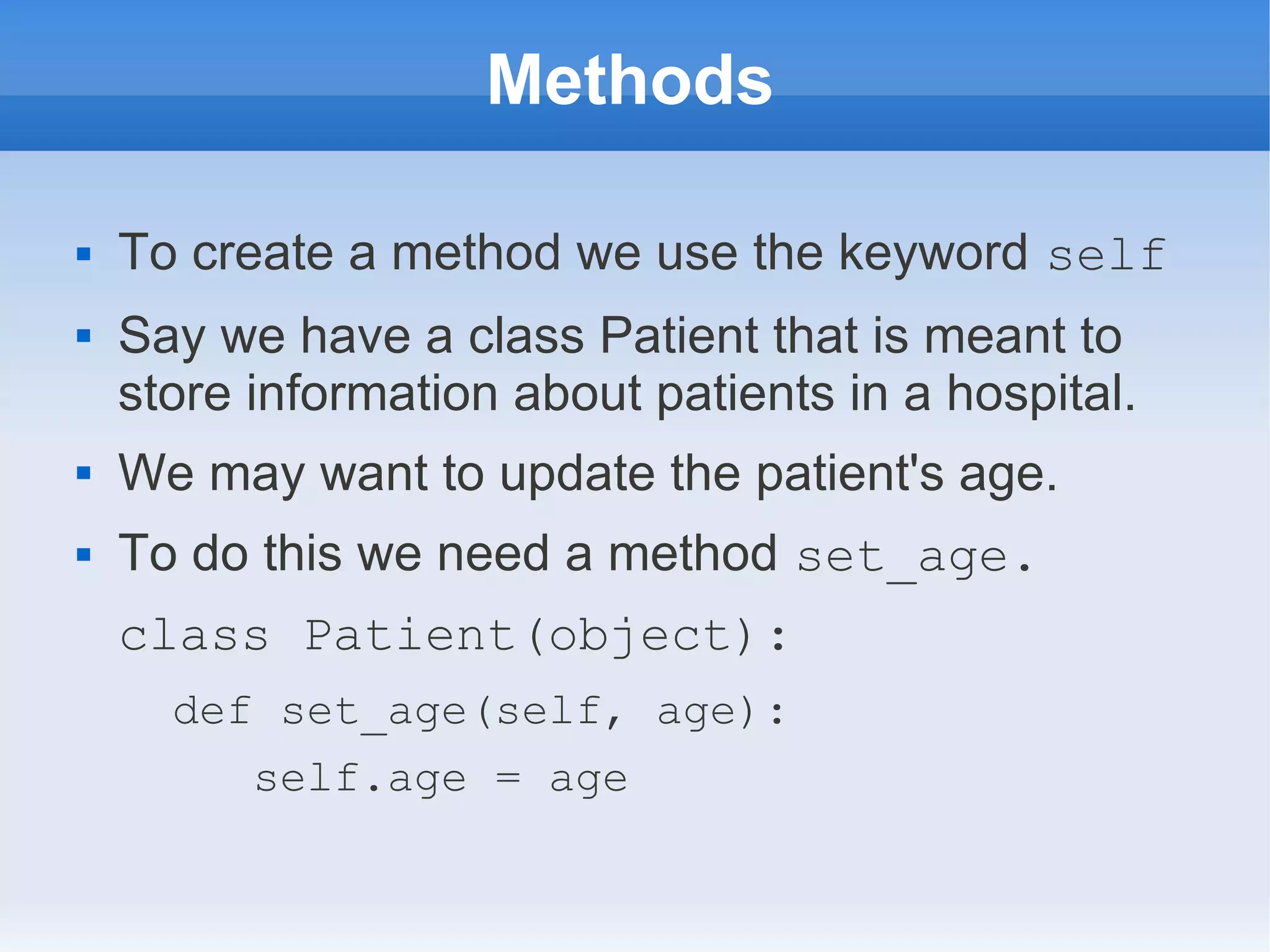
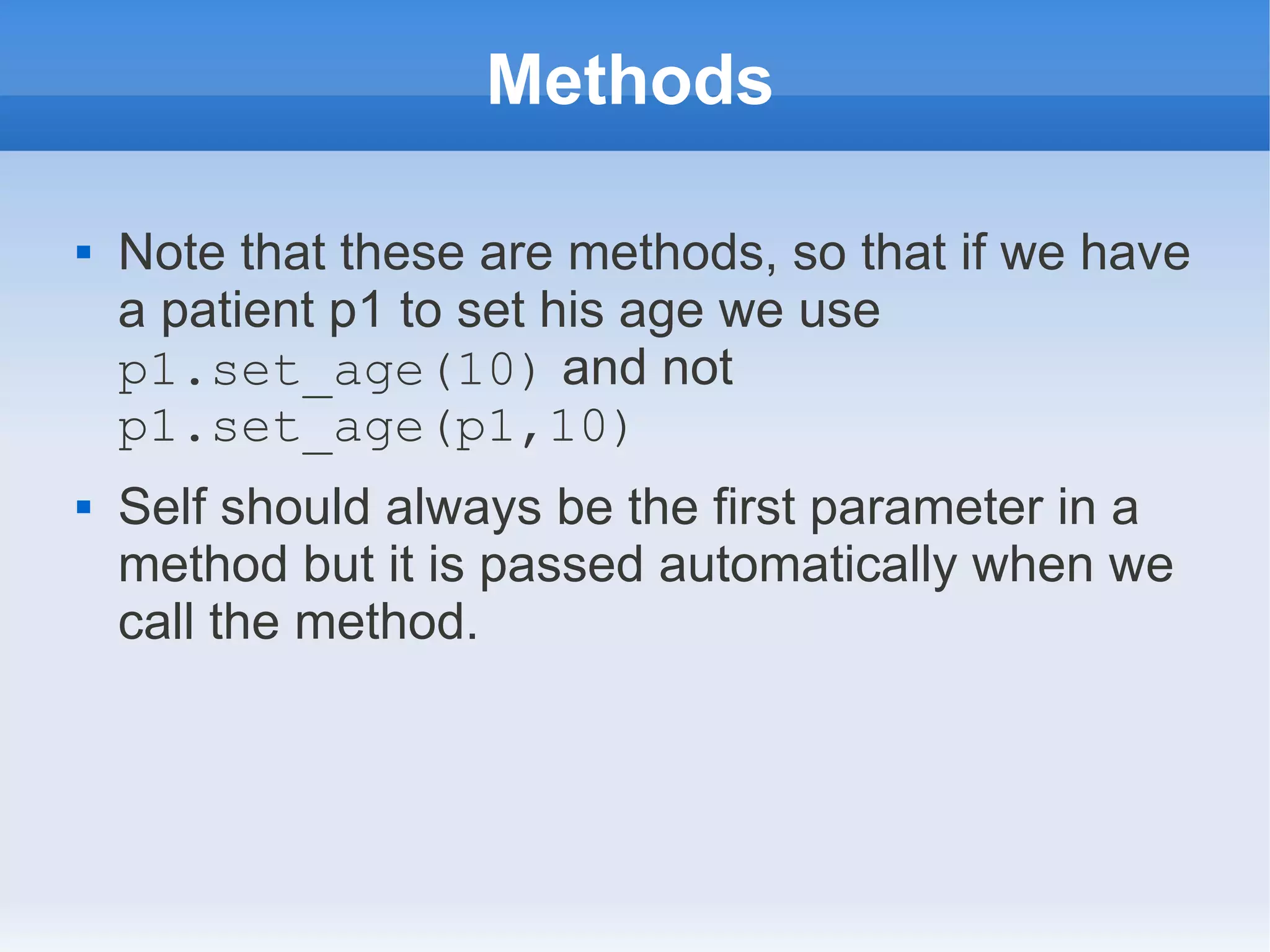

![Constructors Using constructors we can also init variables: def __init__(self): self.data = []](https://image.slidesharecdn.com/lecture5-121023044502-phpapp02/75/Anton-Kasyanov-Introduction-to-Python-Lecture5-8-2048.jpg)




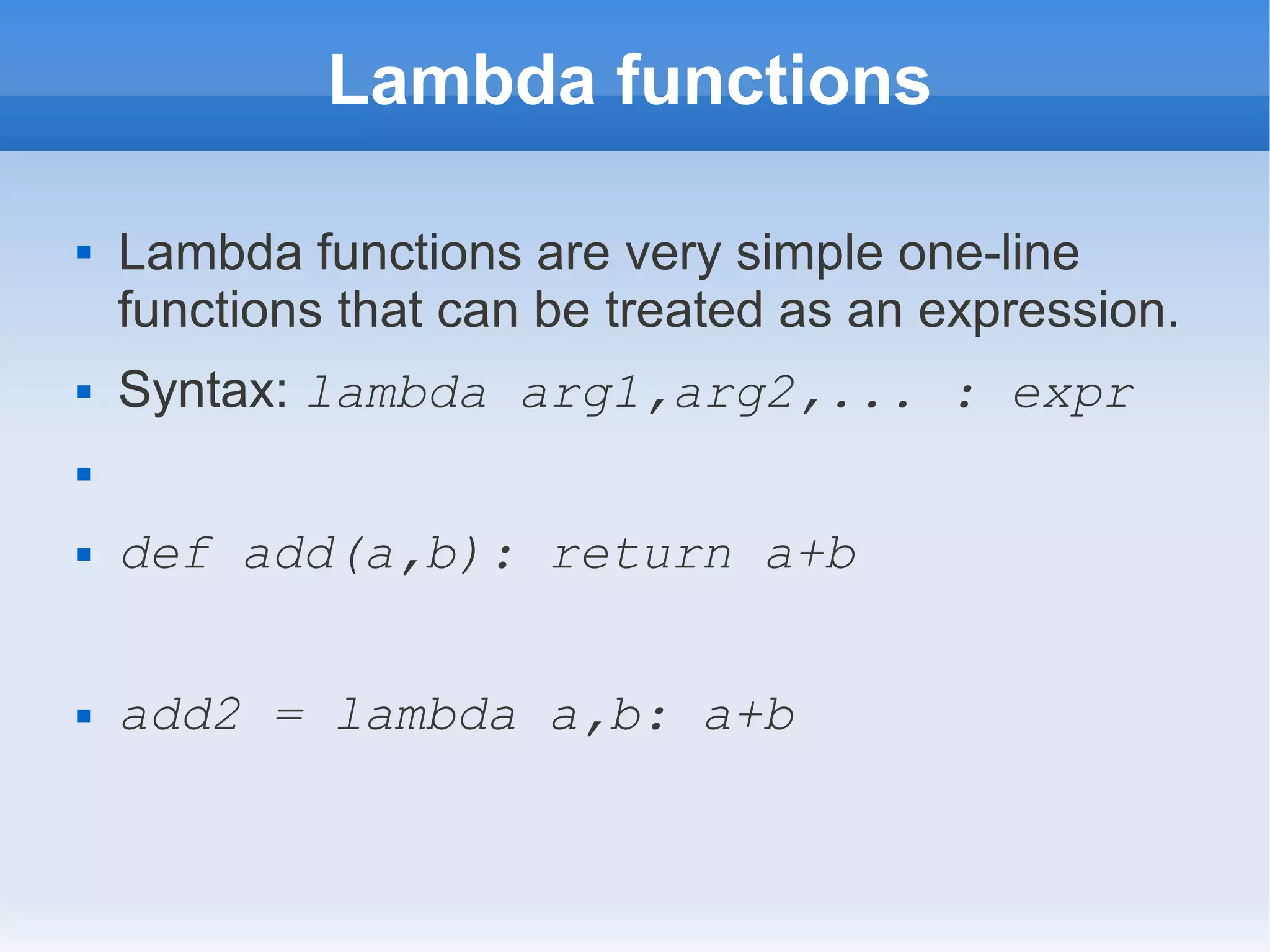
![List comprehensions One line way to create a list E.g.: [a*2 for a in [1,2,3]] Returns: [2,4,6]](https://image.slidesharecdn.com/lecture5-121023044502-phpapp02/75/Anton-Kasyanov-Introduction-to-Python-Lecture5-14-2048.jpg)
